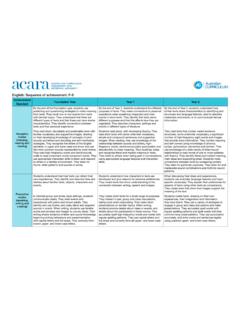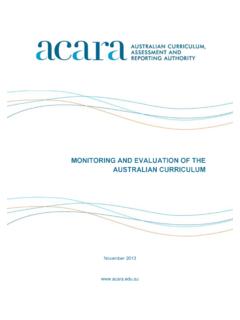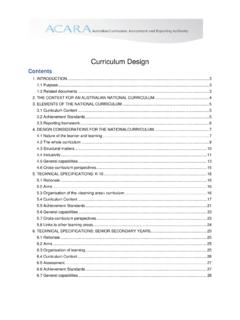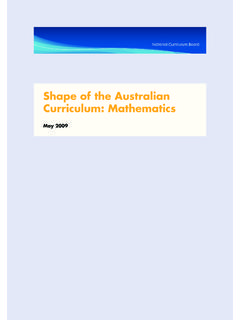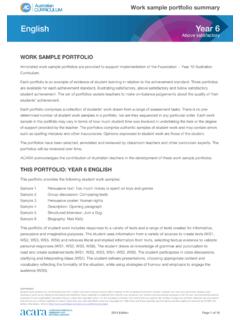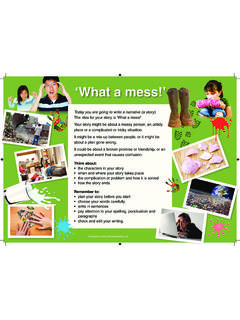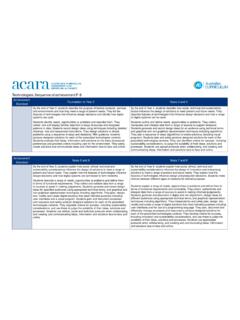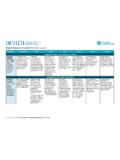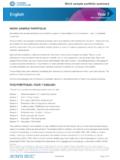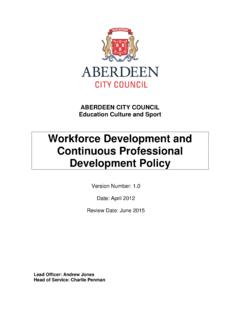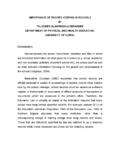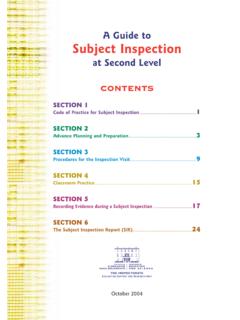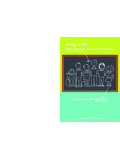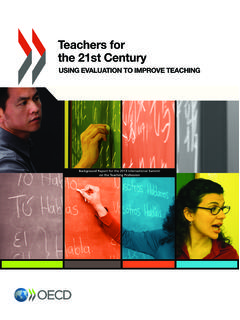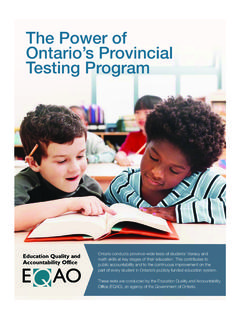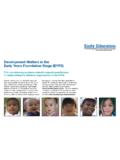Transcription of English as an Additional Language or Dialect …
1 English as an Additional Language or Dialect teacher resource Overview and EAL/D Learning Progression August 2012 History i Australian Curriculum, Assessment and Reporting Authority 2011 This work is copyright. You may download, display, print and reproduce this material in unaltered form only (retaining this notice) for your personal, non-commercial use or use within your organisation. All other rights are reserved. Requests and inquiries concerning reproduction and rights should be addressed to: ACARA Copyright Administration ACARA Level 10, 255 Pitt Street Sydney NSW 2000 Contents English as an Additional Language teacher resource Overview and EAL/D Learning Progression Foundation to Year 10 Contents ii About the Overview and EAL/D Learning Progression.
2 1 Who are EAL/D students? .. 3 Considerations for EAL/D students with limited schooling .. 4 English in Australia .. 4 Intercultural understanding .. 5 Characteristics of EAL/D learning .. 5 Learning a new Language .. 6 Assessment and the EAL/D student .. 7 Introduction .. 9 The EAL/D learning progression includes: .. 9 Important considerations when using the EAL/D learning progression .. 10 EAL/D Learning Progression: View by Stage of Schooling .. 12 Beginning English : Some print literacy in first Language .. 12 Emerging English .. 23 Developing English .. 31 Consolidating English .. 39 EAL/D learning progression: View by Language modes .. 45 Beginning English : Some Print Literacy in First Language .
3 45 Emerging English .. 47 Developing English .. 49 Consolidating English .. 51 Beginning English Some Print Literacy in First Language .. 53 Emerging English .. 55 Developing English .. 57 Consolidating English .. 59 Beginning English : Some Print Literacy in First Language .. 61 Beginning English : Limited Literacy Background .. 63 Emerging English .. 64 Developing English .. 67 Consolidating English .. 69 Beginning English : Some Print Literacy in First Language .. 71 Contents English as an Additional Language teacher resource Overview and EAL/D Learning Progression Foundation to Year 10 Contents iii Beginning English : Limited Literacy Background.
4 73 Emerging English .. 75 Developing English .. 78 Consolidating English .. 81 Advice for teachers of EAL/D students .. 83 Linguistic and cultural factors that affect EAL/D students learning .. 83 Oral Language development for EAL/D 84 Differences between languages and writing systems .. 84 Differences in the ways texts are constructed .. 85 Cohesion in English texts .. 85 Other features of English sentence structure .. 86 English vocabulary for EAL/D students .. 87 Other considerations for teaching EAL/D students .. 89 EAL/D students prior schooling .. 91 Intercultural understanding .. 91 Assumed cultural 92 EAL/D students expectations of schooling.
5 92 Teaching strategies to support EAL/D students access the learning in content descriptions .. 93 Utilising EAL/D students cultural and linguistic resources .. 93 Building shared knowledge .. 94 Ensuring pedagogies of entitlement and Language support for EAL/D students .. 95 Considerations relating to EAL/D students and the school learning environment .. 98 Glossary .. 100 References .. 105 Acknowledgments .. 107 Version History English as an Additional Language teacher resource Overview and EAL/D Learning Progression Foundation to Year 10 Contents iv Date Comment August 2011 English as an Additional Language teacher resource published comprising an overview of EAL/D learning, an EAL/D learning progression, advice for teachers of EAL/D students, a glossary, references and acknowledgments September 2011 Revisions to contents page, minor editorial changes to learning progression and glossary.
6 And inclusion of Additional references August 2012 English as an Additional Language teacher resource re-published and re-named as English as an Additional Language teacher resource Overview and EAL/D Learning Progression Foundation to Year 10 Additional components of the English as an Additional Language teacher resource published including: - Annotated Content Descriptions English Foundation to Year 10 - Annotated Content Descriptions Mathematics Foundation to Year 10 - Annotated Content Descriptions Science Foundation to Year 10 - Annotated Content Descriptions History Foundation to Year 10 - EAL/D Student Work Learning Progression Foundation to Year 10 About the resource English as an Additional Language teacher resource Overview and EAL/D Learning Progression Foundation to Year 10 About the resource 1 The Shape of the Australian Curriculum describes ACARA s commitment to supporting equity of access to the Australian Curriculum for all students.
7 As part of this commitment, ACARA developed the English as an Additional Language or Dialect teacher resource to support teachers as they develop teaching and learning programs in the Australian Curriculum: Foundation to Year 10 with students for whom English is an Additional Language or Dialect (EAL/D). The English as an Additional Language or Dialect teacher resource is available as several related publications: Overview and EAL/D Learning Progression Foundation to Year 10 EAL/D Annotated Content Descriptions Foundation to Year 10 for each of English , Mathematics, Science and History EAL/D Student Work Learning Progression Foundation to Year 10.
8 Additional components of the resource will be published as the Australian Curriculum is developed. All publications are available at The resource has been developed to: advise teachers about areas of the curriculum that EAL/D students may find challenging and why assist classroom teachers to identify where their EAL/D students are broadly positioned on a progression of English Language learning help teachers understand students cultural and linguistic diversity, and the ways this understanding can be used in the classroom provide examples of teaching strategies supportive of EAL/D students direct teachers to Additional relevant and useful support for teaching EAL/D students.
9 Throughout the resource , English refers to Standard Australian English . Overview and EAL/D Learning Progression This publication comprises: an overview of the characteristics of students learning EAL/D and their particular needs an EAL/D learning progression typical of EAL/D students that will help teachers to identify the English Language levels of the EAL/D students in their classrooms and to address their specific learning requirements. It is available in two views by stage of schooling and by Language mode advice for teachers regarding linguistic and cultural considerations and teaching strategies a glossary of terms used in the resource references.
10 Introduction English as an Additional Language teacher resource Overview and EAL/D Learning Progression Foundation to Year 10 Introduction 2 In Australian schools, learning is accessed through English , and achievement is demonstrated through English . Each area of the curriculum has Language structures and vocabulary particular to its learning domain, and these are best taught in the context in which they are used. All teachers are responsible for teaching the Language and literacy demands of their learning areas. EAL/D students require specific support to build the English Language skills needed to access the general curriculum, in addition to learning area-specific Language structures and vocabulary.
